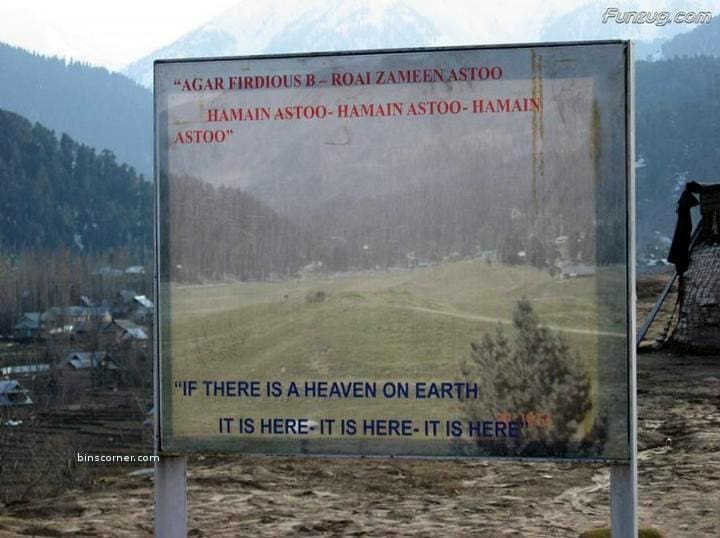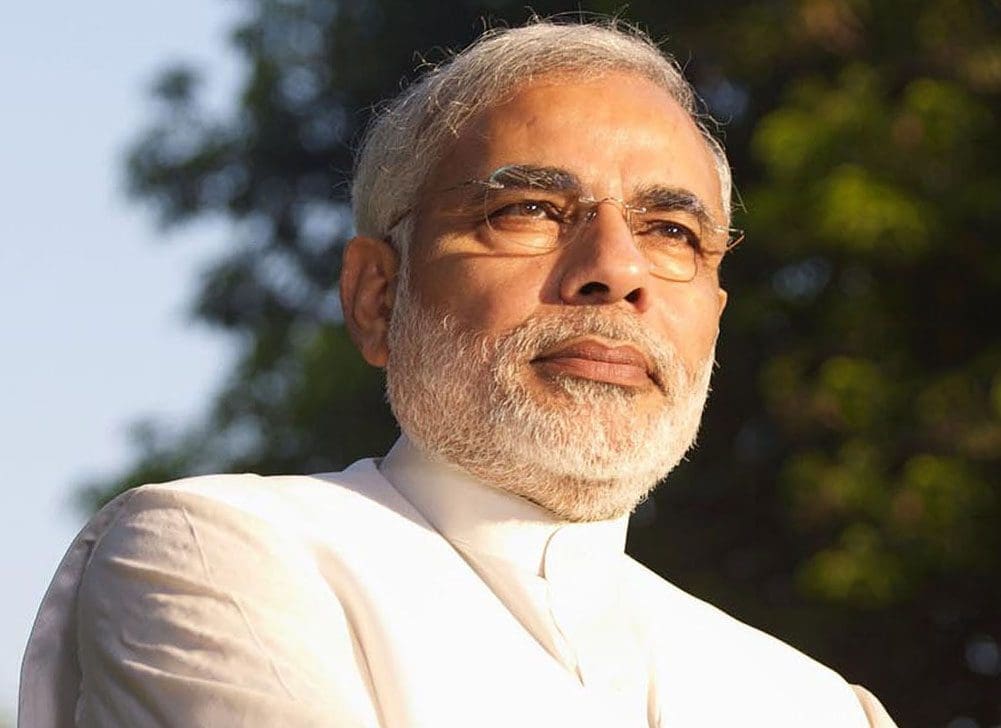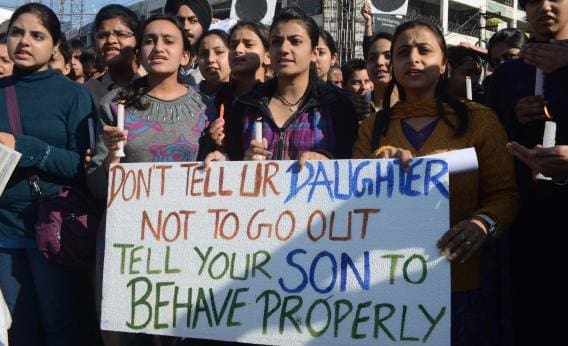
Kashmir, if literally translated, means land desiccated from water: ‘Ka’ (water) and ‘Shimeera’(to desiccate) .Many would call Kashmir an image of the heavens. Others, however, would be obliged to call it the face of hell. The irony is that both would be right, for dwelling amid the lush hills and misty lakes that warrant Kashmir’s status as heaven on earth are such atrocities and tyrannies and such stories of evil that one is obliged to associate the picturesque land with hell.
With the tremulous increase in bloody incidents including the recent killing of 5 Indian jawans, LOC once again heats up and what it brings with it is the sorrow of losing a son, a brother, a husband, a father and a friend to families on both sides in this tit for tat situation. It reminds me of Gandhiji’s quote “An eye for an eye makes the whole world blind”. It is also very sad to see how these inhuman bloody incidents provide fodder for political parties to play their politics on the martyrs’ body.The story does not just end there, to add to the sorrow, our intellectual Netas like Mr. Bhim Singh (Bihar Rural Works and Panchayati Raj minister) then come up to say,”Jawans are there to be martyred. Why else do people join the army and police? ”. Shame on such Netas!
 If Kashmir is heaven on Earth then though unacceptable yet it is in human nature to fight for it which brings us to the root of the issue- inhuman killings, LOC and absence of International boundary along Kashmir. To understand the real cause of this dispute we need to go through the incidents which shaped and brought both the countries to this cut throat situation.
If Kashmir is heaven on Earth then though unacceptable yet it is in human nature to fight for it which brings us to the root of the issue- inhuman killings, LOC and absence of International boundary along Kashmir. To understand the real cause of this dispute we need to go through the incidents which shaped and brought both the countries to this cut throat situation.
Timeline:
1586: Kashmir is under the Mughal Empire
1757: Kashmir comes under the control of the Afghan Ahmed Shah Durrani.
1819: Kashmir is annexed by Ranjit Singh and made a part of his Sikh empire.
1846: Jammu and Kashmir(J&K) State is created. The two Anglo-Sikh wars result in the complete extinction of the Sikh sovereignty in Kashmir. The British give away Kashmir to Ghulab Singh for the sum of 75 lakhs of rupees under the Treaty of Amritsar. He extends his territory by annexing Ladakh.
1931: The movement against the repressive Maharaja Hari Singh begins because the predominant Muslim population was kept poor, illiterate and was not adequately represented in the State’s services.
March 23, 1940: The Lahore Resolution is proposed by Mr. M.A.Jinnah. Referring to British India, it states, “That geographically contiguous units are demarcated into regions which should be so constituted, with such territorial readjustments as may be necessary, that the areas in which the Muslims are numerically in a majority, as in the North-Western and Eastern zones of India should be grouped to constitute Independent States in which the constituent units shall be autonomous and sovereign”. There is no mention of “Pakistan”, an acronym invented by Mr. Chaudhury Rehmat Ali in England, but the Lahore Resolution later becomes known as the Pakistan Resolution.
1946: It is the 1931 protests which lead to The Quit Kashmir Movement against The Maharajah by the Kashmir leader Sheikh Abdullah, and eventually to the Azad Kashmir movement which gains momentum a year later.
After the Indian Independence in 1947, Maharaja Hari Singh, refused to accede to either India or Pakistan. When Pakistan discontinued supplies of essential articles and invaded Kashmir in the following year, the ruler of Kashmir sought help from the Indian government and agreed to place Kashmir under the dominion of India.As a result, the Indian Army fought the First Indo-Pak War and successfully secured three-fifth of Kashmir. At this stage the then Indian Prime Minister Pt.Jawaharlal Nehru decided to ask The United Nations to intervene. A UN cease-fire was arranged on 31st December, 1948 and called for a referendum of the people of Kashmir in order to determine whether majority wished to join with India or Pakistan. However, that vote was never taken.
In 1956 Kashmir was integrated into The Union of India under a new Constitution. Ceasefire line was re-designated as the “Line of Control” following The Simla Agreement of 3rd July, 1972.
Current scenario: Position of Pakistan, India and Kashmiris
The conflict has three major parties; Pakistan, India and Kashmiris.
Pakistan’s view on Kashmir is derived from the principle of “Two Nation Theory” according to which Hindus and Muslims are two distinct nations. Who therefore cannot co-habit in a single nation-state.
 India, on the other hand, doesn’t consider Kashmir as a territorial dispute, as India claims that the Maharajah of Kashmir signed The Accession Treaty in 1947 with the Union of India and therefore, Indian claim to Kashmir is absolutely legal and justified. It rather blames Pakistan for supporting militants by providing them logistics and training for terrorist attacks in Jammu & Kashmir.
India, on the other hand, doesn’t consider Kashmir as a territorial dispute, as India claims that the Maharajah of Kashmir signed The Accession Treaty in 1947 with the Union of India and therefore, Indian claim to Kashmir is absolutely legal and justified. It rather blames Pakistan for supporting militants by providing them logistics and training for terrorist attacks in Jammu & Kashmir.
Within J&K the situation is unique and even more complex because of the cultural, religious, ethnic and regional diversity that characterizes the state. J&K has three districts, Kashmir valley, Jammu and Ladakh. The Kashmir valley is 95% Muslim, many of whom support either accession to Pakistan or independence while the minority of Kashmiri Hindu Pundits, wish to stay with India. The region of Jammu has a Hindu majority, which wants to remain with India. In Ladakh district, Buddhists and Shia Muslims are in majority, who wish to stay with India.
To conclude, the geopolitical complexity and somewhat lack of leadership to resolve the dispute has caused countrymen on both sides to suffer generation after generation and the biggest irony of our times is that the people who are born in The Heaven on Earth spend their life in atrocities and tyrannies concurrent only with hell.
Next article: Possible solutions on Kashmir dispute and do we really need to go on war again?
So stay tuned………….
About the author: Abhishek Kumar Mishra, a final MBBS student at KMC, Mangalore.
Edited by: Vyom Agarwal
You may send in your own articles and suggestions to us on [email protected] or [email protected]





Be the first to comment